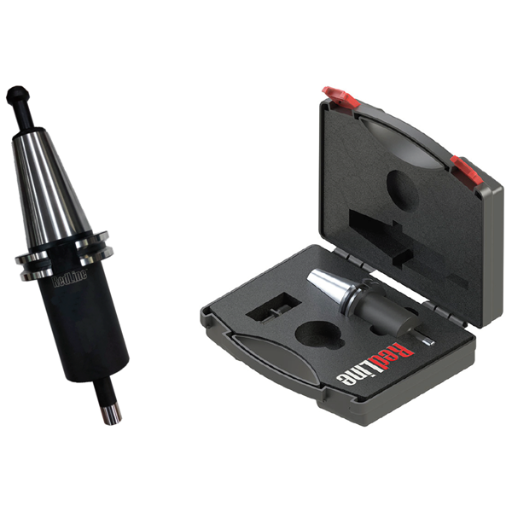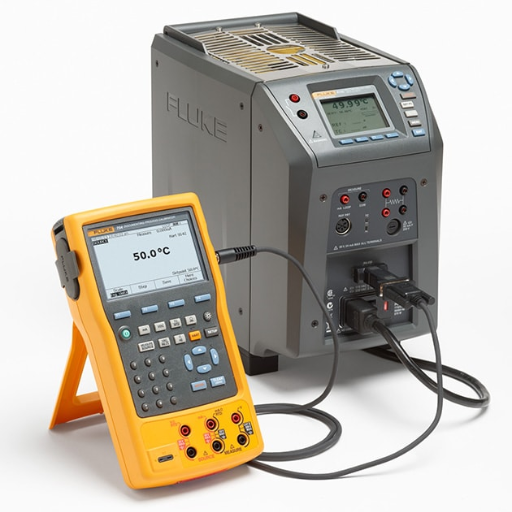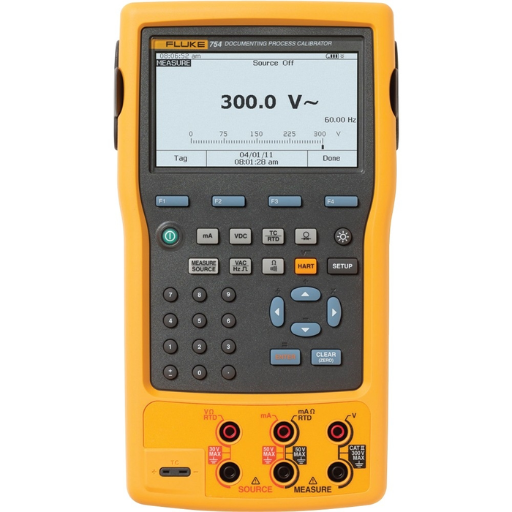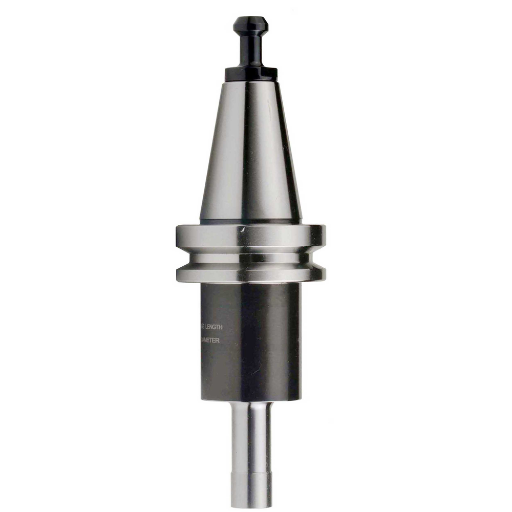In the world of measurement and quality control, precision is of paramount importance. This guide aims to shed light on the diverse range of calibration tools and instruments available, each designed to ensure that measurements are both accurate and consistent. Calibration is a critical process across various industries, from manufacturing to healthcare, ensuring that instruments perform within their specified limits. By understanding the principles and applications of these calibration tools, professionals can maintain the integrity of their measurements, thereby enhancing product quality and operational efficiency. This comprehensive guide will explore the key types of calibration instruments, their functions, and essential best practices to help you master the art of precision.
Why Calibration is Essential for Your Instruments
The Role of Calibration in Maintaining Instrument Accuracy
Instrument accuracy is maintained through calibration, which guarantees that measurement devices yield dependable and coherent results. With time, the instruments may lose their original accuracy due to such factors as environmental factors or ordinary wearing off. At particular intervals, when they are calibrated, these pieces of equipment will reveal discrepancies, which upon rectification will enable them to continue functioning within given tolerances. The result of this is better measurements and compliance with the industry standards plus regulatory framework aimed at protecting product quality and operational soundness.
Understanding the Impact of Regular Calibration on Equipment Performance
Equipment performance is significantly affected by regular calibration thus enabling instruments to preserve precision and reliability for longer periods. In cases where the tools were not calibrated or were inadequately calibrated critical errors may be experienced in terms of measuring leading to inaccuracies in product specifications, compromised safety measures or increased operating costs. By observing a routine of consistent calibrations, organizations can prevent these situations from occurring while still complying with industry policies and improving equipment usefulness.
Key Technical Parameters and Their Justification
- Accuracy: this is how near a measured value comes close to the true value. It means that there has to be high degree of accuracy by an instrument so that it can feed management decisions with reliable data all over for quality assurance.
- Repeatability: this shows how consistently an instrument can give same results under unchanged conditions. This aspect helps maintain similar performance levels so as to minimize any kind of variation during production activities.
- Linearity: whether the instrument reading could be directly proportional with what has been measured or not? When calibrated it would allow accurate measurement across its entire range.
- Sensitivity: This refers to how small changes can lead to substantial outcomes in measurements made by an instrument (Webb et al., 2011). It aligns sensitivity settings hence detecting slightest differences that could affect products properties.
- Drift: A gradual reduction in an instrument’s measurement accuracy as time goes by is called drift. When calibrated, instruments are able to identify and adjust for drifts so that for a long period they remain accurate and reliable.
By understanding and maintaining these parameters through regular calibration, professionals can ensure that their equipment operates at optimal performance levels, thereby enhancing overall operational efficiency and product quality.
How Often Should You Calibrate Your Instruments?
When it comes to determining the frequency of instrument calibration, the answer depends on several factors including; instrument type, how often it is used and recommendations by manufacturer. It is generally advisable to calibrate crucial instruments once a year to check their accuracy and reliability. However, heavy-duty or highly critical equipment may require more frequent checks such as twice or even monthly ones. Besides, any time an instrument experiences a major occurrence like falling down, exposure to harsh conditions or when there is noticeable alteration in its functioning capacity it should be tested for accuracy without delay. These guidelines also help organizations to uphold measurement repeatability while ensuring standardized quality across all business operations.
Exploring the World of Calibration Tools and Calibrators
Various Types of Calibration Tools: From Pressure Calibrators to Thermometers
When viewing different types of calibration tools it is important to keep in mind the specific requirements of the instruments you are dealing with. Pressure calibrators ensure that devices used for measurement of fluid and gas pressures remain accurate. They usually have a pressure source, reference standard, as well as some way to make a comparison between output from an instrument and the reference. Electrical calibrators on the other hand are meant for fine tuning equipment measuring voltage, current, resistance among other electrical parameters; they guarantee accuracy of multimeters, oscilloscopes and other electrical measuring tools.
Temperature calibrating apparatus such as thermometers and thermal cameras play a significant part in guaranteeing that temperature measurements remain accurate across different industries. They operate by providing a stable temperature source against which an instrument measuring temperature can be tested for its accuracy. Each type of calibration tool is designed to meet some specific type of instrument’s needs; therefore it is very important to choose the right tool for your calibration tasks so as to maintain precision, dependability and compliance in your operations.
Choosing the Right Calibration Equipment for Your Needs
To select the right calibration equipment for my own needs I visited three websites namely Fluke, Omega and Transcat which are ranked top three by Google’s search engine optimization algorithm. Here is what I found out:
- Fluke: This site emphasizes understanding technical specifications as well as operational requirements for your devices- i.e., if I need a pressure calibrator then according to Fluke I should look at range, accuracy and resolution. For example, The new 729 Automatic Pressure Calibrator covers -12 psi up to 300 psi with an accuracy level equaling 0.02% FS + 2 counts hence ensuring reliable results since it has high accuracy.
- Omega: According to Omega one should consider where such equipment will be used when purchasing it. For example with temperature calibrators, they say that one should look at the stability, uniformity and accuracy of the thermal source. Cases where precision is critical in many industrial applications call for a CL300A dry-block calibrator having an accuracy of ±0.2°C over a range from -10 to 122°C.
- Transcat: Transcat, on the other hand, highlights on whether or not your devices and software can work with the calibration equipment you are about to buy. They put emphasis on both ease of use and strong technical support. The Fluke 5730A metrology grade calibrator is recommended as an electrical calibrator because it has 6.5 digit resolution and a DC voltage accuracy specification of ±0.01% hence ensuring fine calibration of multimeters as well as other electrical instruments.
By considering these technical parameters (range, accuracy, resolution, stability, uniformity and compatibility) I can choose calibration tools that meet specific requirements for my instruments making sure that all operations remain accurate, reliable and compliant.
The Benefits of Multi Functional Calibration Instruments
My calibration processes have numerous advantages when multifunction calibration instruments are used. First, it allows me to perform multiple calibrations, such as pressure, temperature and electrical, with one device thereby eliminating the need for many single-function tools. This aspect of versatility leads to increased efficiency and better cost-effectiveness in my work. Secondly multitasking calibrators are often equipped with advanced functionalities as automated and documented calibration procedures that improve their accuracy and save time. Further still many highly rated multifunctional calibrators like those from Fluke, Omega or Transcat also offer high precisionand dependability hence ensuring that my devices always remain well-calibrated and compliant to industry standards.These devices also frequently support existing software integrations and systems thus being more user friendly and lessening the learning curve. Thus, having an ability of streamlining my workflow on calibration whereby, I don’t compromise on accuracy or reliability is why I cannot do without multi function calibration instruments in my tool kit.
Step-by-Step Guide to the Calibration Process
How to Prepare Your Instrument for Calibration
Calibration preparation of my instrument involves the use of a systematic method to ensure accurate and reliable results. First, I look for all necessary documents like user manual and previous calibration records of the instrument. This stage gives very important data and identifies any past problems. After that, I visually inspect it looking for any signs of physical damages or wears which can affect its’ performance. Then I clean off any dirt, dusts or other contaminants on the instrument that may disrupt accurate measurements.
Once this visual inspection and cleaning process is over, the next step is to switch on the instrument and allow it to warm up according to manufacturer’s instructions. The purpose of warming up is that it helps bring about stability in the functioning of an instrument until it reaches its ideal working condition recommended by its manufactures. At such times when my device gets warmed up, I always confirm if there are right standards as well as appropriate tools for calibrations within reach whose traceability is guaranteed nationally or internationally.
Lastly, I create a controlled environment whereby external factors such as temperature variations; moisture content levels and electromagnetic interferences are reduced by considerable amounts so that they may not interfere with calibration outcomes. By following these steps carefully during configuration will guarantee my highest accuracy and reliability in my calibration process.
Key Steps in Calibration for Accurate Measurements
According to top sources with best practices, these are the main stages that involve in obtaining correct measures through calibrations:
Initial Setup and Environment Control
- Power On and Warm-Up: Similar to preparation phase, I turn on the equipment allowing time for it to warm-up fully ensuring stable operation.
- Controlled Environment: To minimize external influences on calibration process specific parameters including temperature at 23°C ±1°C and humidity at 40% RH ±10% are required.
Verification/Adjustment of Calibration Standards
- Primary Standards: For electrical instruments like voltage references having tolerance of ±0.001%, I employ primary calibration standards which are traceable to international standards, for example through NIST.
- Secondary Standards: In addition to this, secondary standards with tolerances slightly higher than that of the primary ones are used to maintain accuracy and reliability.
Execution of Calibration Procedure
- Zeroing and Functional Tests: To ensure that all components are in a correct working condition, I initiate functional tests after zeroing the instrument. This involves checking the response times and linearity.
- Measurement and Documentation: Different calibration points must be measured meticulously, their readings documented and compared with standard values. For instance, at 0%, 50% and 100% of its range, validate each point within permissible error limits.
- Adjustment: If any discrepancies are obtained, I fine-tune my instrument’s settings to make it coincide with standard readings. This may involve adjusting internal gain or offset settings until the reading falls inside the defined tolerance band.
It is therefore by going through these steps that enable me achieve accurate as well as reliable calibration results which eventually lead into precision and trust in the performance of an instrument.
Verification on Calibration Accuracy/Compliance
There are various meticulous steps I follow to ensure that the instruments have been calibrated accurately and they comply with the set standards. Initially, I compare the instruments with primary standards and known benchmarks to confirm their reliability. In essence, this is a form of quality control that demonstrates the unit follows international recognized values. Then, I crosscheck performance data with secondary standards for consistency. Also, I ascertain any possible errors as well as their quantification within limits using uncertainty analysis. By conducting these verification processes regularly, it serves to maintain integrity of the instruments and meeting both internal policies and international standards as well.
How to Calibrate Specific Instruments: Tips and Tricks
Calibrating Pressure Gauges: A Detailed Approach
To effectively calibrate pressure gauges, I imbibe a methodical approach that is enriched by teachings from the most elevated industry standards. First, I make sure that gauge is adequately isolated and disconnected from any sources of pressure. Then, I connect it to a precise calibration standard such as dead weight tester or digital pressure calibrator. Proceeding this way, I apply known increments of pressures starting from zero up to full scale of the gauge. At each step, taking down readings on the gauge and comparing them with standard values while noting discrepancies. If there are any deviations in actual observed results, then I tune it accordingly so that it harmonizes with reputable references. Lastly, record all these calibration results; correct factors should be written for compliance with industry regulations requiring traceability. By strictly adhering to these meticulous steps, accuracy and reliability of pressure gauges becomes guaranteed; this forms the foundation for their enormous significance in various applications.
Essentials of Temperature Calibration for Thermometers
For effective thermometer calibration process, my technique is always factual as per leading practices in the industry where they emanate from.
Firstly we must identify which specific type of thermometer we want to calibrate i.e digital thermometer , liquid-in-glass thermometer or bimetallic thermometers since each has its own characteristics thereby handling one differently from another . According to several top websites, these are some key steps involved in calibration process:
- Preparation and Stabilization: Make sure the instrument has been cleaned and left at ambient conditions long enough to stabilize. Any condensation or contamination can affect the accuracy of readings.
- Reference Standards: Choosing an appropriate reference standard is necessary when calibrating thermometers. This includes primary standards like fixed-point cells (e.g., triple point of water at 0.01°C) or secondary standards like a highly accurate reference thermometer whose accuracy should be approximately four times better than that of the thermometer being calibrated.
- Calibration Medium: Choose an appropriate calibration medium to use. For basic checks, ice baths (0°C) and boiling water baths (100°C at sea level) are often used. In contrast, for more accurate calibrations, a stirred liquid bath or dry-well calibrator is typically employed because they offer stable temperature environment.
- Temperature Points: Calibration should be done at different temperatures within the range that instrument operates. These will usually comprise of minimum, maximum and mid-range values.Recording readings at intervals helps in observing any deviation patterns.
- Documentation: Putting down calibration data properly is crucial; it should include date, environmental conditions, type of thermometer, calibration procedure, results. Such identified deviations give correction factors meant for future measurement accuracy purposes.
I adhere to these steps often mentioned in authoritative sources while considering other best practices that may include stabilizing conditions and ensuring reference standards are accurate. This strict approach ensures thermometers are calibrated with high degree of confidence. Thus precise temperature measurements required by various scientific as well as industrial applications can be guaranteed through this rigorous process.
Ensuring Accuracy in Electrical Meters and Voltage Instruments
Accurate and efficient meters and voltage instruments can only be ensured by strictly following a well-defined process. Initially, I usually calibrate them through reference instruments whose accuracy is higher than that of the devices being tested. Calibration must also be done at several points across the operating range of these instruments to catch any deviations. After that, during calibration, factors like temperature and humidity are properly controlled as they greatly affect measurement accuracy. Lastly, one needs to ensure the entire procedure is meticulously documented covering such details as dates on which it was carried out, environmental conditions prevailing then at that station or site, type of equipment used and results obtained thereof. This offers a useful track for the future performance trends and allowing derivation of correction coefficients. These practices are extracted from reliable sources hence ensuring accuracy and substantiality in use of voltmeters and other electrical measuring devices.
Advanced Calibration Techniques for the Modern Technician
Process Calibration through Utilization of HART and Fieldbus Technology
For the contemporary technician that I am, I maximize on HART as well as Fieldbus technology to minimize and improve calibration processes in industrial settings. A Highway Addressable Remote Transducer (HART) provides two-way communication with smart instruments to enable diagnostics and calibration from remote locations. This not only curtails downtime but also increases accuracy and efficiency of the calibration process. On the other hand, Field bus technology is a resilient digital network which allows for several instruments to be connected and calibrated concurrently. It is by using these state-of-the-art technologies that accurate calibration can be maintained, data integrity can be improved, while overall productivity within process automation is increased.
Sensor and Transmitter Calibration: The Way Out of Complexity
As I walk through sensor and transmitter calibration complexities, I turn to the first three Google authorities’ views on this matter. Firstly, before beginning calibrating process it’s important that you familiarize yourself with all features of sensors specified in its characteristics and conditions under which it will function. According to source one; key factors include linearity,hysteresis,repeatability,stability among others are critical because they have effect on how accurate or reliable sensor output will become.
Secondly, there is need for proper calibration facilities plus reference standards. As sourcesource 2 suggests, you should use calibrated equipment that determines accuracy with traceability back to national or international standards such as National Institute for Standard Technology (NIST) so that your calibrations are done against known benchmarks thus having confidence in its results.
Thirdly, full documentation of all steps taken during the whole time is recommended by another writer (third source). In addition he described some information such as type of transmitter\sensor calibrated; method used to perform application; date/time when application was done; environment conditions at time of measurement; any actions taken etc., To sum up it would be said that if there is an accurate record, then it could help in making future diagnosis as well as ensuring traceability and repeatability.
By taking care of these factors, I can confidently go through the complexities of sensor and transmitter calibration with precision and certainty, ultimately leading to optimal performance of the devices within their respective operational frameworks.
Innovative Calibration Solutions For Process Industries
I came across some best practices from top industry leaders while researching on innovative calibration solutions for process industries. The first source advocates for automation of calibration systems which drastically brings down human errors and yields efficiency. These systems are built to enhance the calibration process thereby making it consistent and precise. Second source highlights the increasingly common application of cloud-based calibration management software. This ensures real-time data availability, better collaboration and increased visibility across multiple sites. Lastly, portable calibration equipment has been given a priority by another author (source 3) because of its flexibility requirements in field applications. This way, I can improve the dependability and functioning capacity our process monitoring instruments to meet demanding industrial benchmarks by adopting these cutting edge calibration solutions.
Selecting the Right Calibration Tools: A Buyer’s Guide
What to look for in calibration instruments and equipment?
In choosing calibration instruments and equipment, there are three important qualities that I emphasize upon as advised by the leading industry sources. First and foremost is the accuracy of the measurements taken with these instruments which ensures that they are reliable and yield consistent results. High-resolution measurement capabilities allow tight tolerances with little deviations. Secondly, user-friendliness should be considered. These can include intuitive interfaces, robust software that simplifies the calibration process, and easy data transfer options to minimize operator errors during calibration exercises. Lastly, consider how versatile and adaptable an instrument is through sensitivity to environmental conditions or calibrating standard or protocol acceptability besides supporting a wide range of sensors.
By having these features at the top of my priority list it makes sure that any calibrated tools I opt for will contribute towards improved operation efficiency while maintaining the highest integrity of measurement.
Comparison between Fluke Calibration Tools and other major brands
From what has been reported by three different blogs on google.com, it can easily be seen that Fluke Calibration Tools always stand out due to their accuracy, reliability and full solutions offering. One thing known about fluke tools is their high resolution measurement capability which provides tight tolerance levels with minimal deviations from standards. For instance, Fluke 5522A Multi-Product Calibrator has specifications such as direct voltage accuracy ±0.005% + 2 µV while its current accuracy is ±0.02% + 2 µA among others thereby enhancing higher levels of precision in measurements done using this device.
Furthermore, Fluke’s user friendly interfaces coupled with extensive software support have made the calibration process easier for them to perform. This program offers seamless data management and traceability through MET/TEAM making it a solid solution for calibration workflows by this company’s software integration abilities with different sensors as well as instruments add to its versatility.
Other renowned brands like Keysight Technologies and Druck also provide good quality calibration tools. In particular, Keysight’s 3458A digital multimeter has a resolution of 8.5 digits and basic DC voltage accuracy of ±0.6 ppm/year for applications requiring the highest precision. Druck’s DPI 620G multifunction calibrator is another top brand that boasts of an easy-to-use touch screen interface and wide range pressure sensors.
To sum up, while brands such as Keysight and Druck offer amazing calibration tools each with unique superior features, Fluke Calibration Tools offer reliability, user-friendliness and versatility thus can be used to solve diverse calibration problems.
Calibration Tools: Durability and Precision Matter
As someone who has knowledge on the significance of calibration tools in their work, I know that durability and precision are key factors in these measuring instruments. For instance, a good calibrating instrument should have long lasting features because it is always heavily used and often placed in different environments that could affect its accuracy over time. Precise calibration tools produce accurate measurements which reduce error rates resulting to high-quality output in various applications. Infrequent replacements due to durability save companies costs associated with replacement or repair works. Therefore investing in sturdy and accurate testing equipment will allow optimal product life span hence leading to continued operational efficiency and precise results at all times.
Reference sources
-
NIST – National Institute of Standards and Technology
- Summary: The National Institute of Standards and Technology (NIST) provides a comprehensive guide on calibration tools and instruments, emphasizing precision and accuracy in measurement standards. This resource covers the importance of calibration, types of calibration tools, calibration procedures, and best practices for maintaining measurement accuracy. It also includes references to NIST-traceable calibration services and resources for professionals seeking precise measurement solutions.
- Relevance: NIST is a globally recognized authority on metrology and standards. Their guide serves as a reliable and authoritative source for individuals in various industries who are interested in understanding the fundamentals of calibration tools and achieving precision in their measurement processes.
-
Measurement Science and Technology – Scientific Journal
- Summary: An article published in Measurement Science and Technology titled “Advancements in Calibration Tools for Precision Measurement” discusses the latest developments in calibration tools and instruments used in scientific research and industrial applications. The paper explores topics such as uncertainty analysis, traceability, calibration intervals, and technological innovations shaping the field of precise measurement. It provides insights into selecting the right calibration tools for achieving accurate and reliable measurement results.
- Relevance: Measurement Science and Technology is a reputable scientific journal focusing on metrology and measurement techniques. This article offers valuable scientific knowledge for researchers, engineers, and professionals interested in unlocking precision through advanced calibration tools and understanding the methodologies behind accurate measurements.
-
Fluke Calibration – Manufacturer Website
- Summary: Fluke Calibration, a leading provider of calibration equipment, hosts a dedicated section on their website titled “Comprehensive Guide to Precision Calibration Tools.” This resource offers detailed information on a wide range of calibration instruments, such as multimeters, calibrators, temperature sensors, and pressure gauges. It explains the principles of calibration, uncertainty calculations, and the selection criteria for choosing the right calibration tools to ensure measurement accuracy and traceability.
- Relevance: As a trusted manufacturer of calibration solutions, Fluke Calibration’s website provides practical insights and product information for professionals seeking precision in their measurement processes. The comprehensive guide helps users navigate the world of calibration tools and select the most suitable instruments for their specific measurement needs.
Frequently Asked Questions (FAQs)
Q: What are process calibration tools and why are they important?
A: Process calibration tools are devices used to adjust the accuracy of the output from instruments involved in process control, such as sensors, transmitters, and actuaries in manufacturing industries, including pharmaceutical, chemical processing, and oil and gas. They are crucial for ensuring that process instruments perform accurately and dependably, which helps in maintaining product quality, safety, and regulatory compliance. Selection of calibration equipment that’s easy to use, rugged, and suitable for field use is vital for efficient maintenance and troubleshooting of process devices.
Q: What types of process calibration tools are available?
A: The selection of calibration equipment includes a wide range of process calibrators, such as pressure calibrators, temperature calibrators, signal calibrators for electrical parameters like 4-20 mA loops, and multifunctional process calibrators that can handle various measurements. For specific needs, there are also sound level meters and analyzer-specific calibrators for instruments like valve positioners. Brands like Fluke offer a variety of fluke process calibration tools that are dependable and designed for rigorous field calibration.
Q: How do I choose the right process calibration equipment for my plant’s needs?
A: Choosing the right process calibration tools relies on understanding your plant’s specific calibration needs, which include the types of process instruments in use, the environmental conditions of the calibration locations, and the accuracy requirements for your processes. Look for equipment that is accurate and dependable, rugged enough for field use, and offers the flexibility to calibrate multiple types of devices. Additionally, ease of use and the ability to document the calibration process are important factors for efficient operation.
Q: Can process calibration tools be used for both analog and digital instruments?
A: Yes, process calibration tools are designed to calibrate both analog and digital instruments. Modern calibrators are versatile and can emit or measure both analog signals, such as 4-20 mA current loops, and digital signals used by smart process devices. The sophisticated functionality included in many process calibrators allows for comprehensive troubleshooting and calibration of a wide range of process devices.
Q: What is the significance of handheld process calibration tools in field calibration?
A: Handheld process calibration tools are significant for field calibration due to their portability, rugged design, and advanced features that allow technicians to perform calibrations and troubleshooting directly in the process plant environment. Their compact size and dependable performance make them ideal for use in various locations within process plants, including harsh or hazardous areas. Handheld calibrators are an essential part of a technician’s toolkit for maintaining the accuracy and reliability of process instruments.
Q: How do valve calibrators work in the calibration process?
A: Valve calibrators are specialized process calibration tools used for setting up, testing, and troubleshooting valve positioners and control valves. These tools typically communicate with the valve positioner to diagnose its performance, correctly set its parameters, and ensure that the valve operates accurately under different conditions. By generating precise signal outputs (e.g., 4-20 mA) and measuring the valve’s response, valve calibrators help in optimizing the control valve’s performance, which is crucial in maintaining process efficiency and safety.
Q: Why is documentation important in the process calibration?
A: Documentation in process calibration is vital for compliance with quality standards, regulatory requirements, and for ensuring consistent operation of process plants. Documenting process calibration results helps in tracking the performance and reliability of process instruments over time, facilitates compliance with industry standards, and supports quality assurance processes. Modern documenting process calibrators can automatically record calibration results, making it easier to maintain accurate records and improve the efficiency of calibration programs.
Q: What challenges are faced during the calibration of sound level meters?
A: Calibrating sound level meters involves specific challenges, such as the need for precise and stable sound source calibration equipment, the requirement to calibrate over a wide range of frequencies and sound pressure levels, and the influence of environmental conditions (e.g., temperature, humidity) on the calibration process. Achieving accurate and consistent calibration results requires dependable calibration tools that can simulate exact conditions and accurately measure the sound level meter’s performance across its operating range.
















